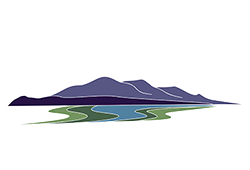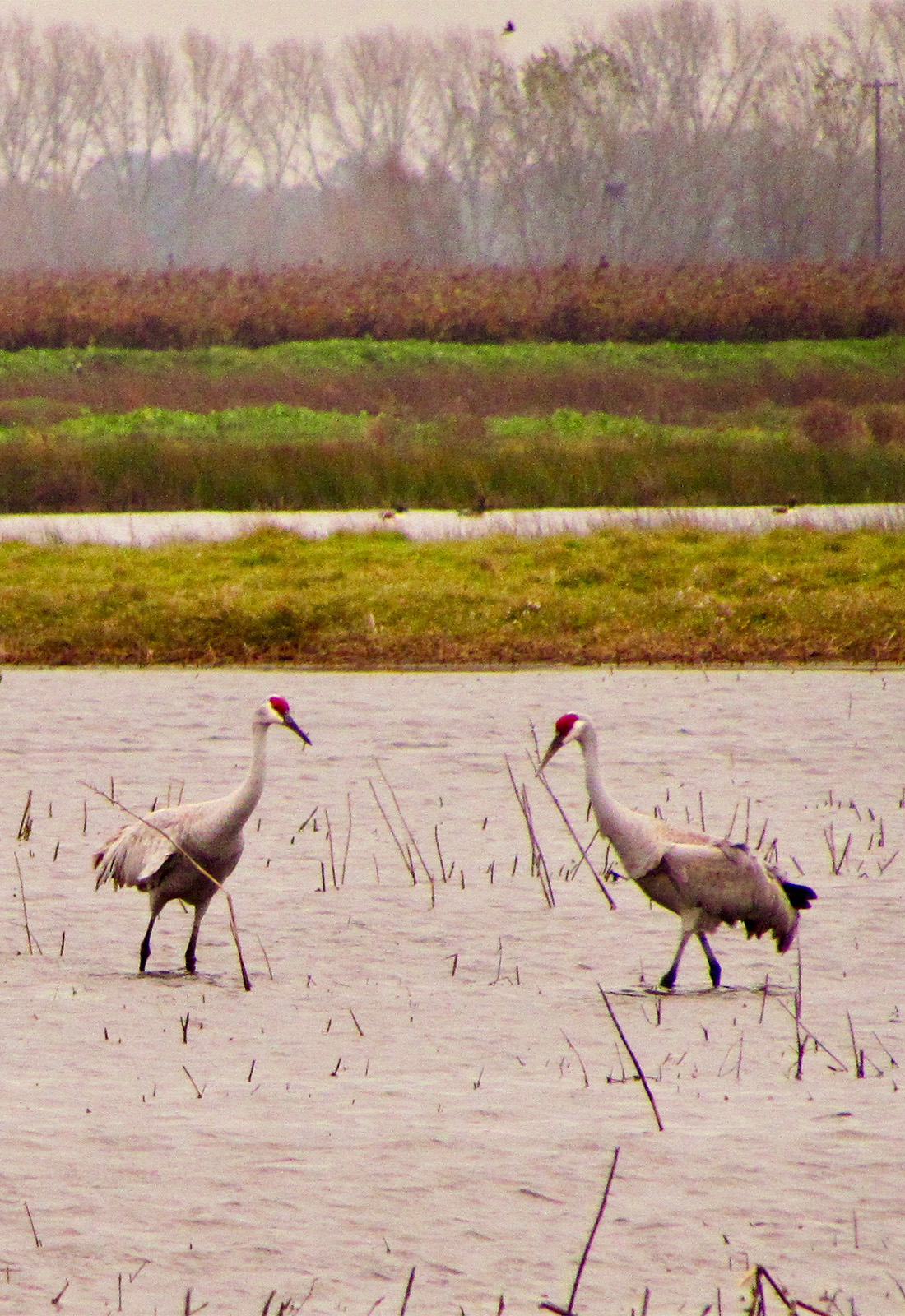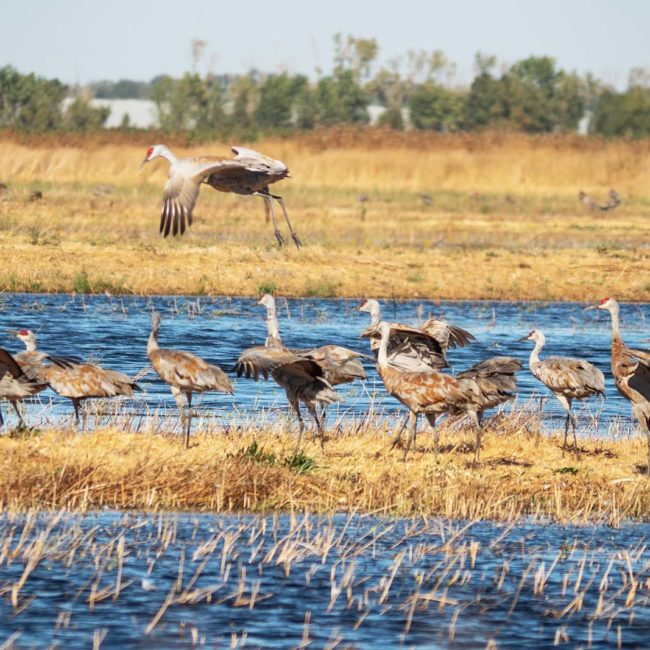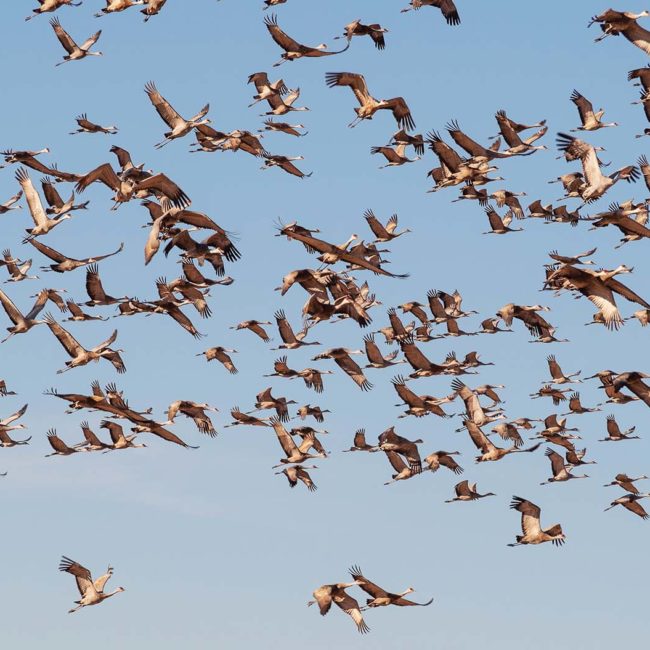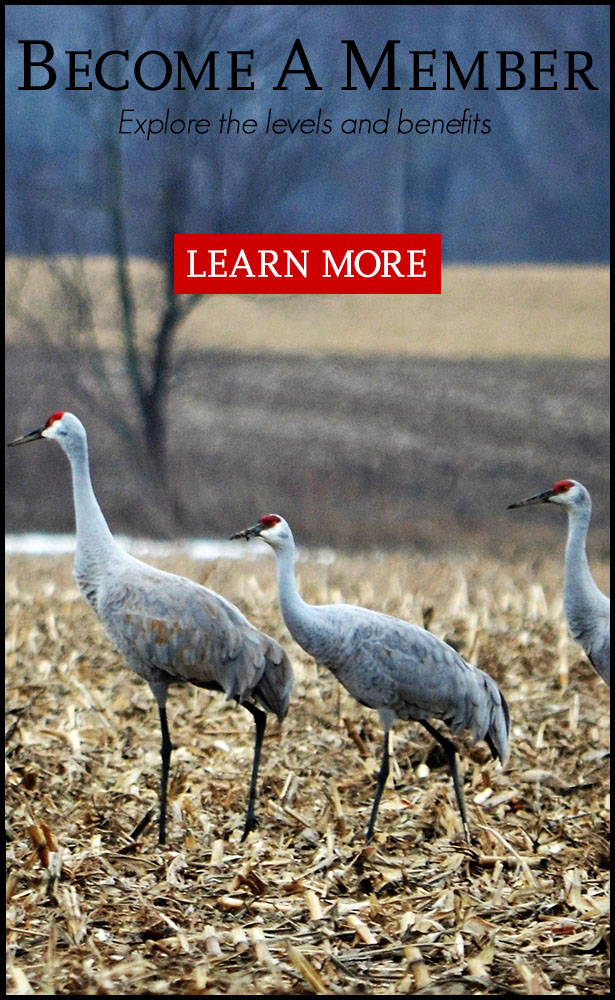About the Cranes
by Bruce Forman Outdoor California — Winter, 1995
Winter in the Central Valley may seem cold, damp and foggy to you, but thousands of sandhill cranes feel right at home in the valley’s grasslands and marshes.
This magnificent bird offers awesome viewing experiences, whether it is feeding on grains, loafing or flying to an evening roost. The sight and sound of a flock of these gargling journeyers gracefully descending into a sunset-lit field makes for a lifetime memory.
Cranes have a remarkable ability to find each other through vocalizing. Even in large flocks, lost family members re-unite after making their trilled cry. Cranes also exhibit many distinct postures, from dancing and tossing sticks in courtship to bowing their red-crowned heads in aggression to stretching out their neck to signal that people are too close.
It takes a patient and sharp eye to discern the difference between Greater and Lesser Sandhill Cranes. They have a similar body shape, plumage and color. Lesser Sandhill Cranes stand four feet high, with a four-inch, dagger-like bill. The greater is five feet tall, with a five-inch bill.
These sub-species both migrate northward. The lesser breeds in northern Canada and Alaska, and the greater breeds in northeastern California, the Northwest and Great Lakes states. Greater sandhill cranes are threatened due to the loss of wetlands. The resulting crowding can lead to outbreaks of avian cholera, a fatal disease.
The Department of Fish and Wildlife, other agencies and private organizations acquire wintering and nesting lands, buy conservation easements and convert farmlands back to wetlands. Restoration involves regrading earth, pumping water, planting native vegetation and maintaining short ground cover. Citizens can support these efforts by contributing to the state’s tax checkoff program for threatened and endangered species.
Herons are often mistakenly identified as cranes. If you see a long-legged bird in a tree, you can be sure it’s not a crane. The crane’s back toe is too short to grip branches. Herons nest in tree colonies, while isolated pairs of cranes nest on the ground.
Sandhill Crane Viewing Tips
MINDFUL OF WILDLIFE
- Put birds first
- Let migrant birds rest & feed
- Back away from alarmed birds
- Make slow & steady movements, avoiding nests, roosts & display areas
MINDFUL OF PEOPLE & SAFETY
- Respect public & private property, and follow laws
- Park only in approved sites, leaving room for others
- Be a positive ambassador for the birding community
- Practice courtesy by curtailing conversation & noise
MINDFUL OF PERSONAL BIRDING EXPERIENCE
- Enjoy the serenity of quiet walks while birding
- Observation takes patience
- Pause often when listening for bird calls
- Seek to learn, but take time to enjoy yourself
MINDFUL OF NATURE PROTECTION
- Support protection of important bird habitat
- Stay on roads, trails and paths where they exist
- Carpool whenever possible
- Dispose of waste properly
Viewing Locations in California
Viewing cranes in summer and winter are two different experiences. In the winter, cranes congregate in large numbers. In the summer they spread out, often miles apart to breed and raise their offspring. (Click a location to view map)
California Department of Fish and Wildlife
Ash Creek Wildlife Area, Bieber (Summer)
Butte Valley Wildlife Area, MacDoel (Summer)
Gray Lodge Wildlife Area, Gridley (Summer)
Honey Lake Wildlife Area, Susanville (Summer)
Los Banos Wildlife Area, Los Banos (Winter)
Woodbridge Ecological Reserve, Galt (Winter)
The Nature Conservancy/Bureau of Land Management
Carrizo Plain National Area, Maricopa (Winter)
Cosumnes River Preserve, Galt (Winter)

